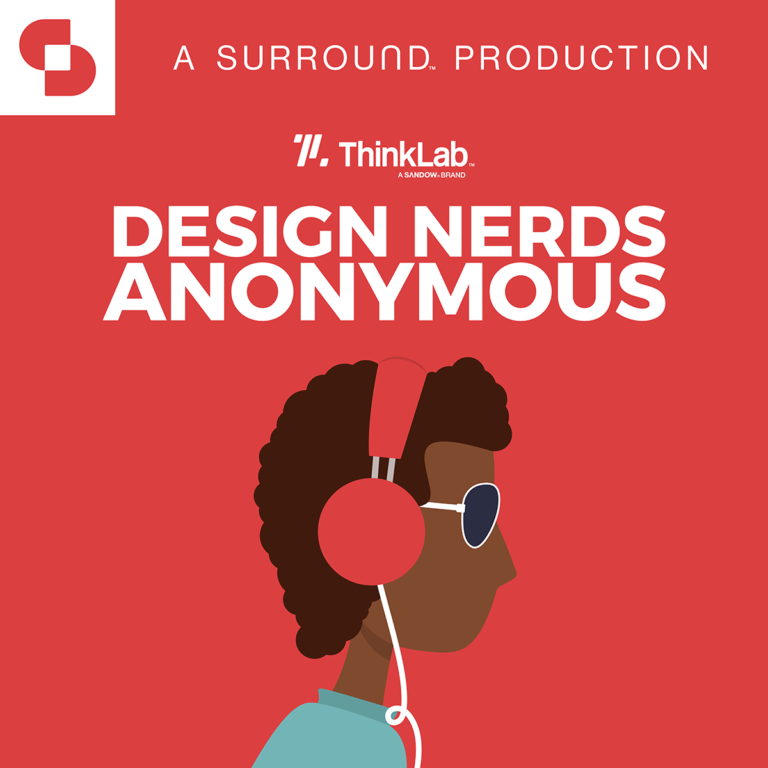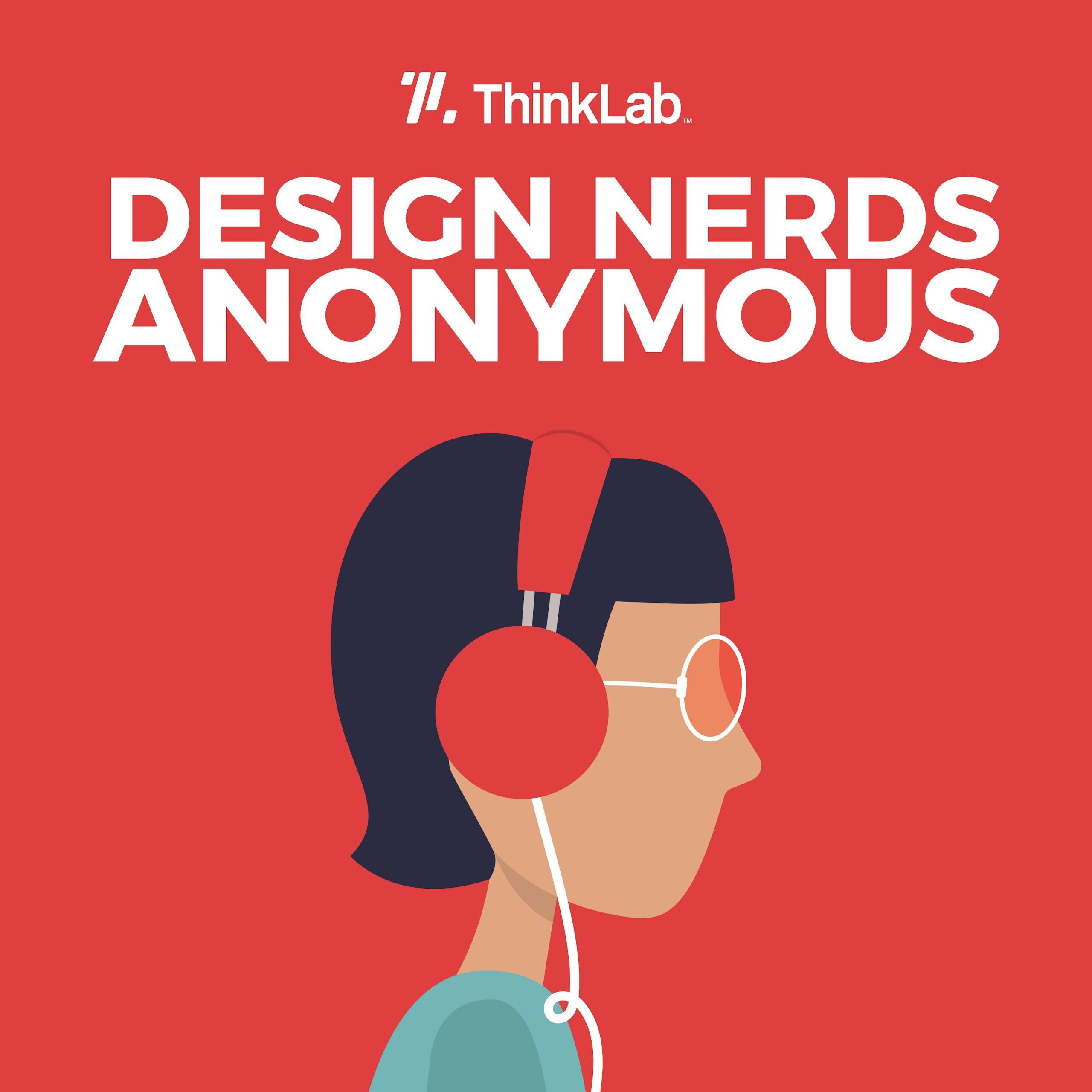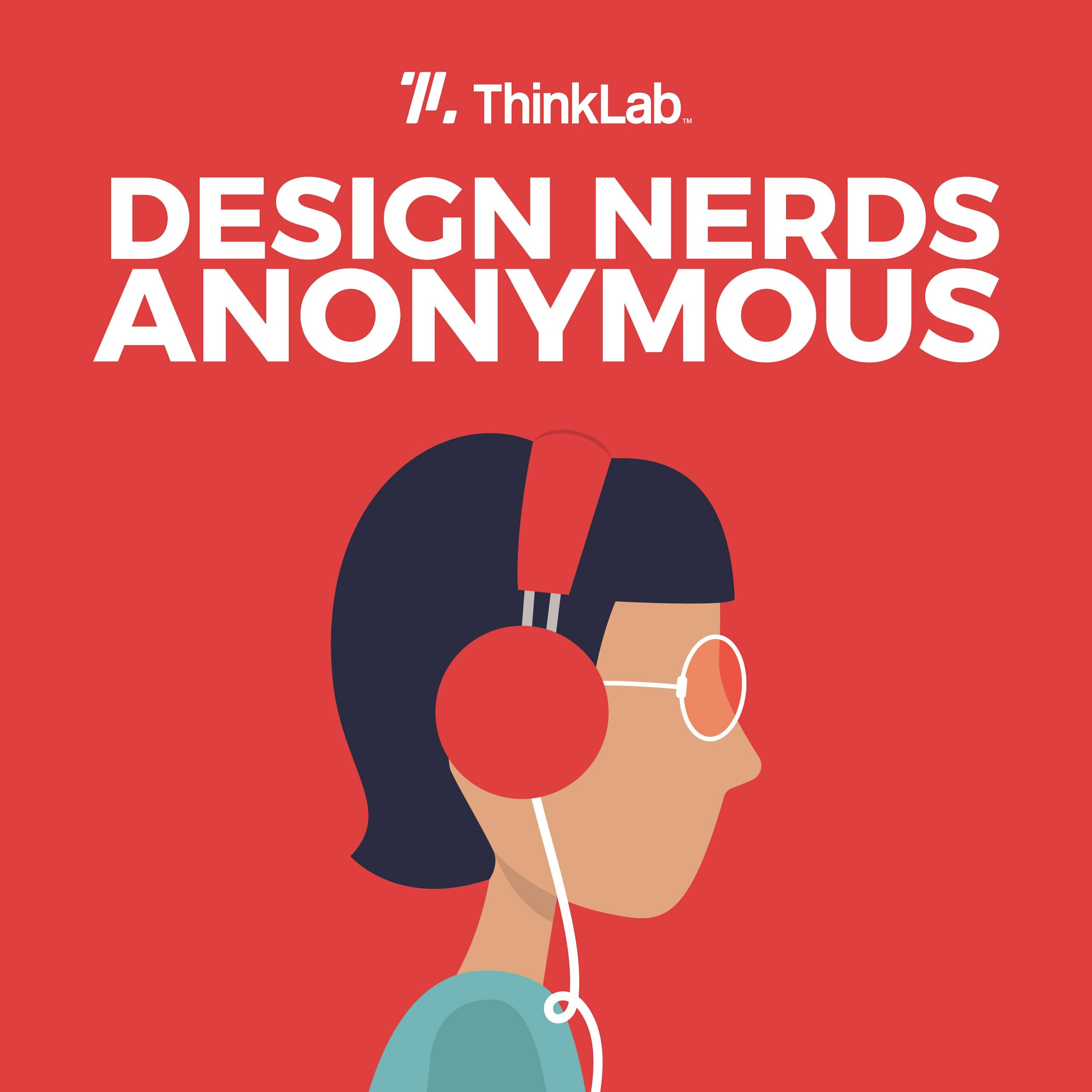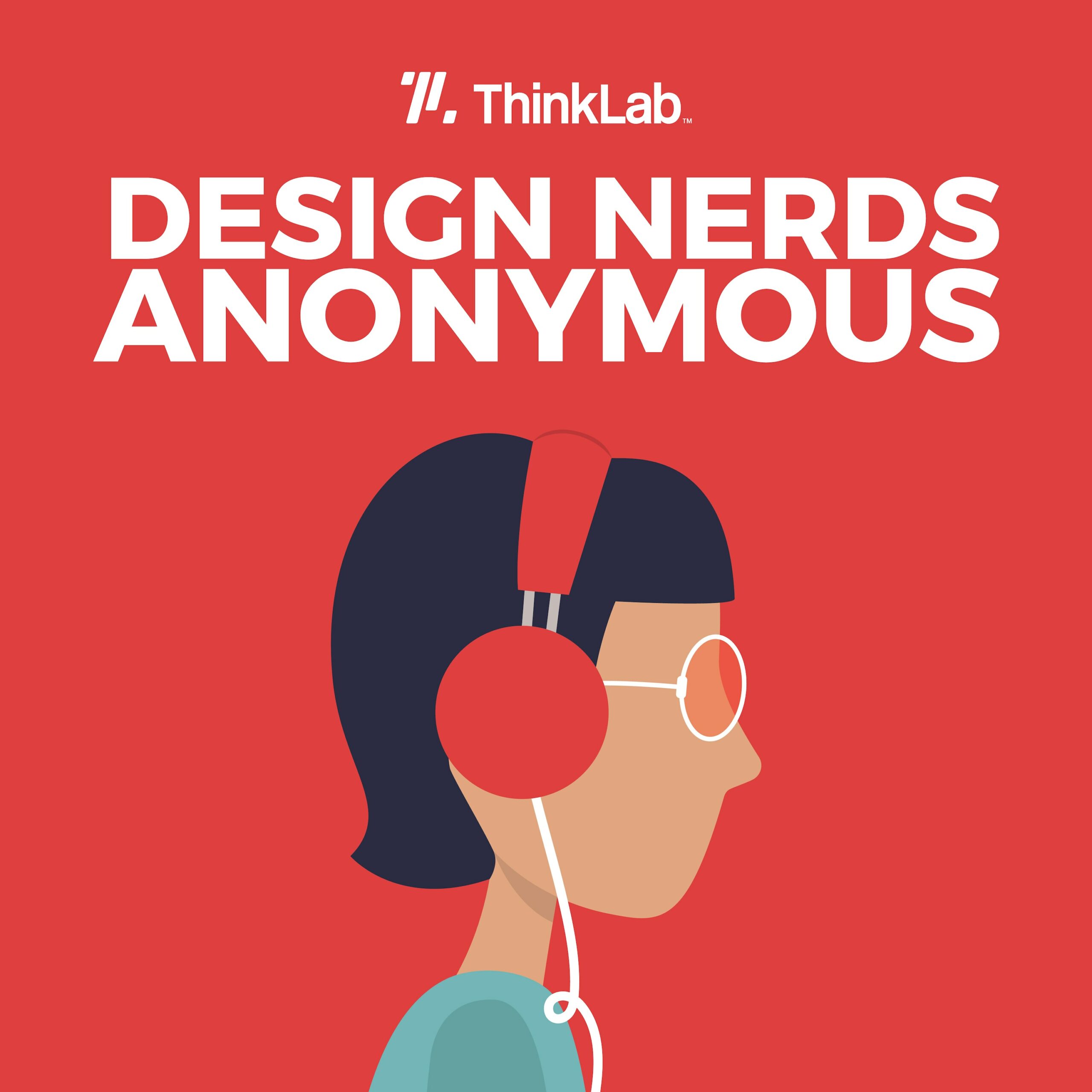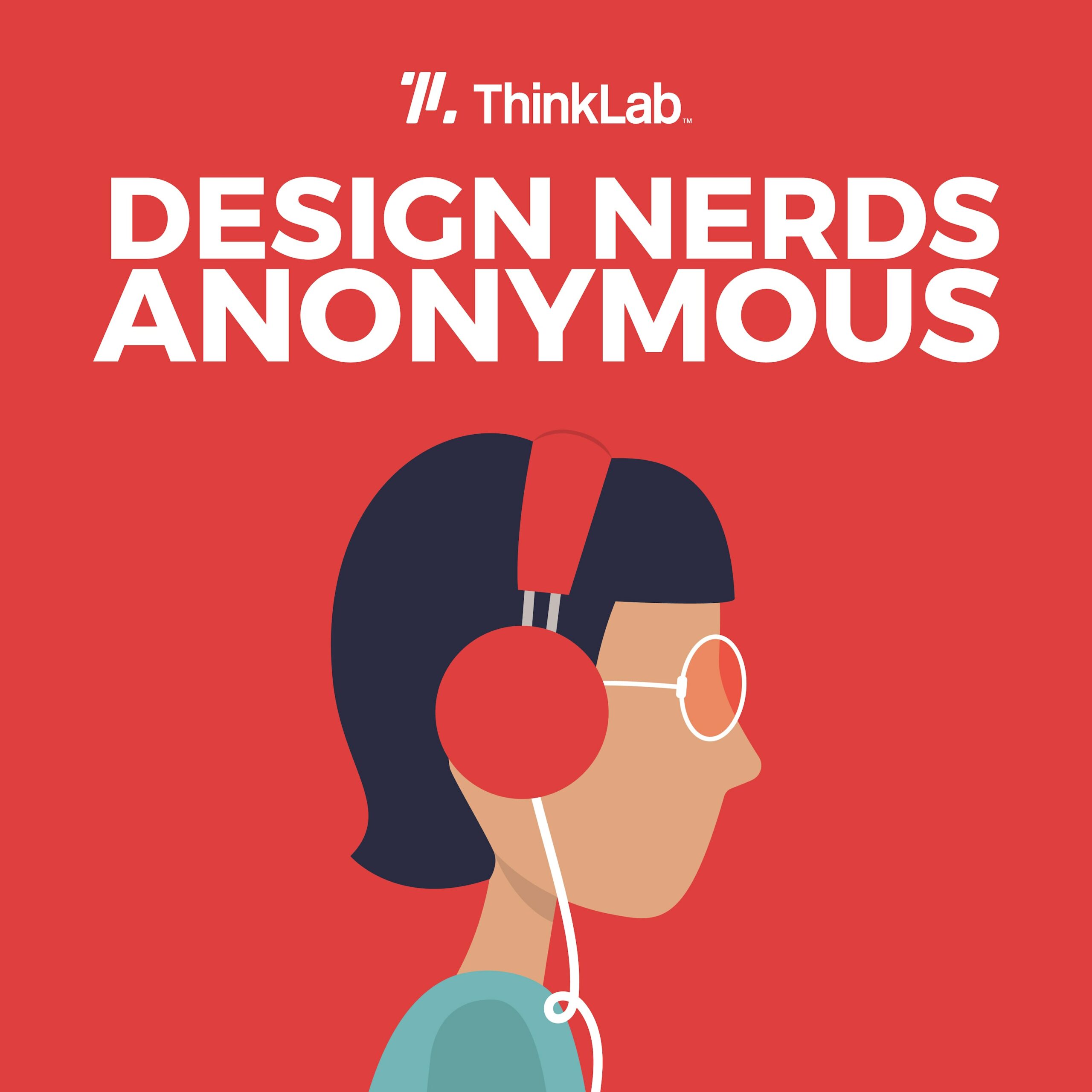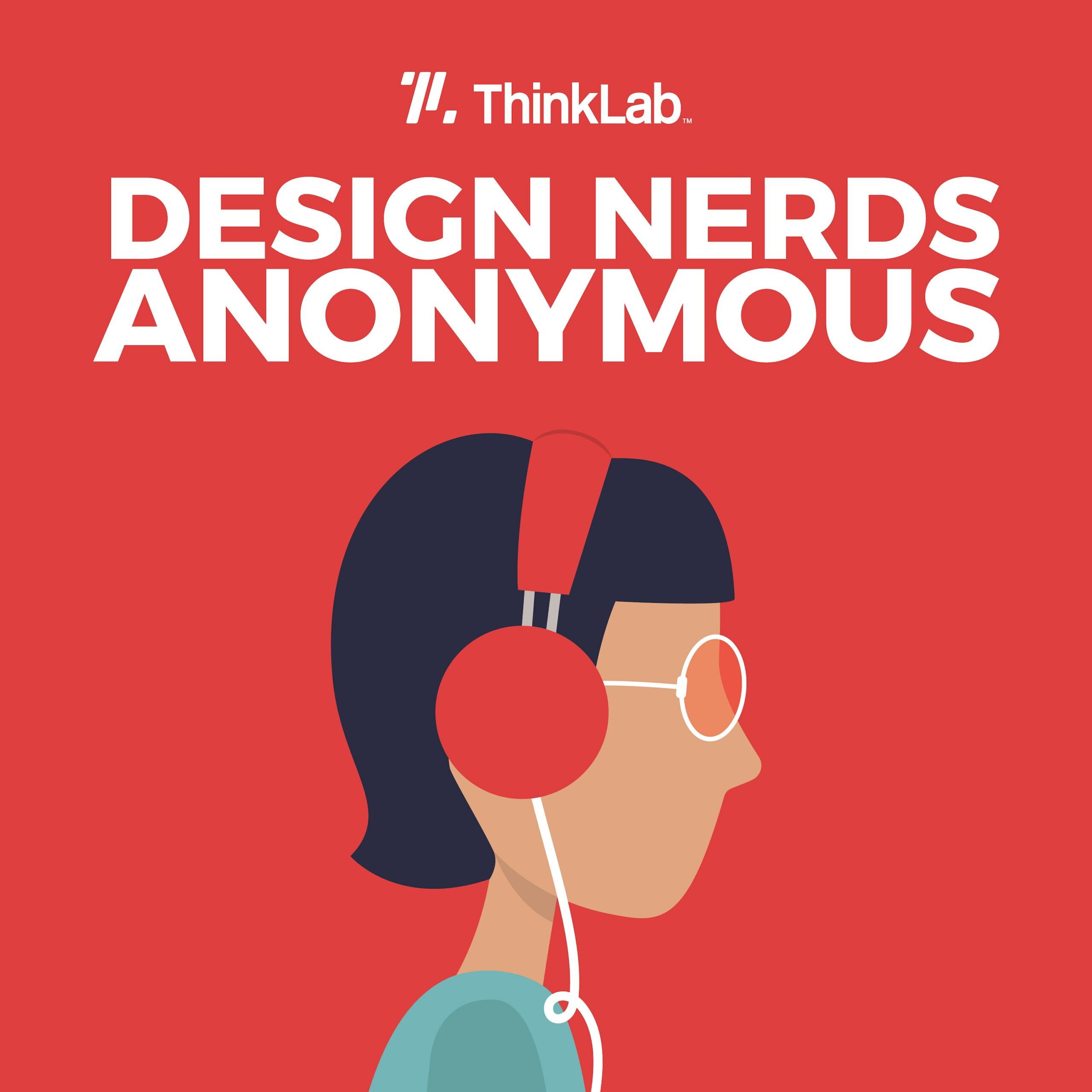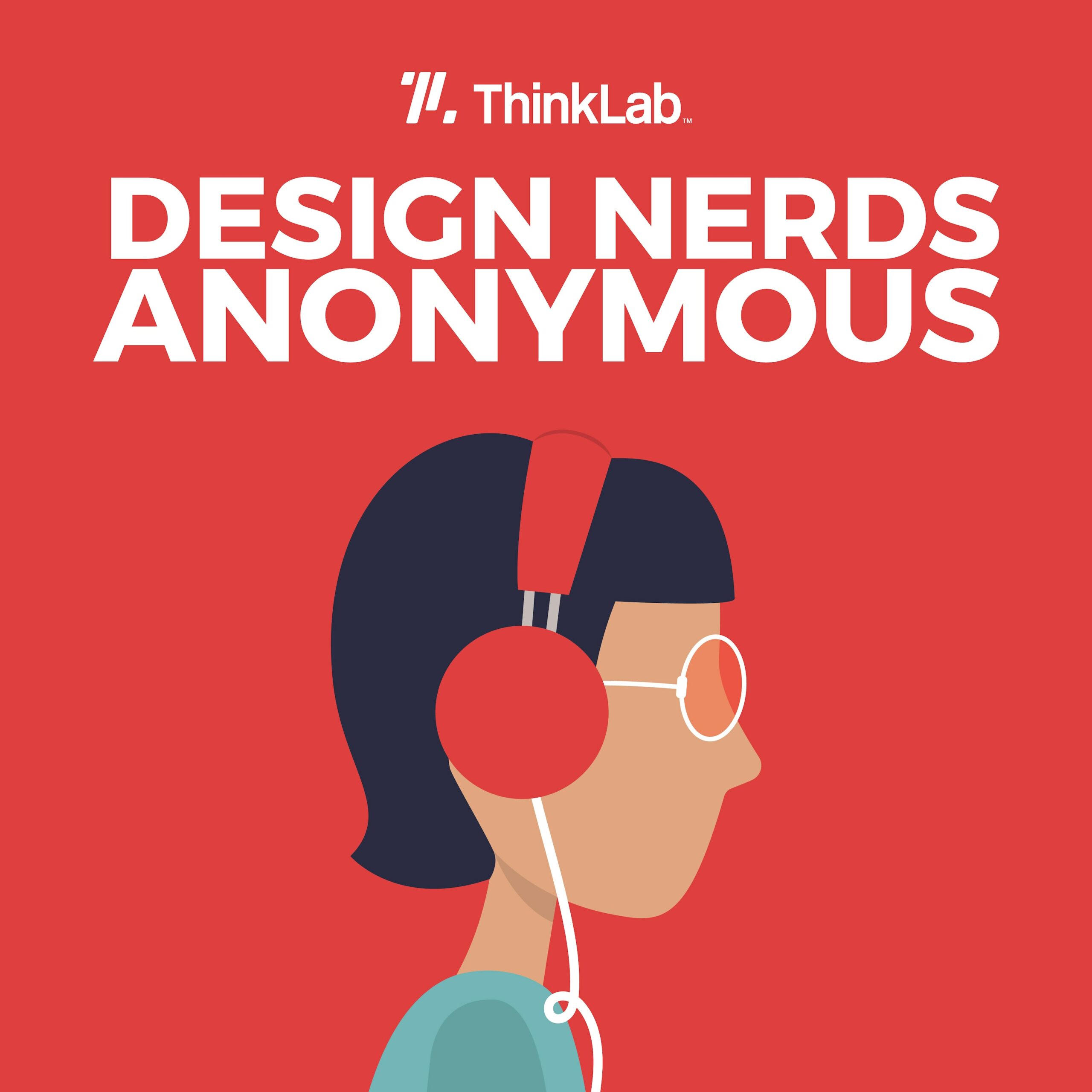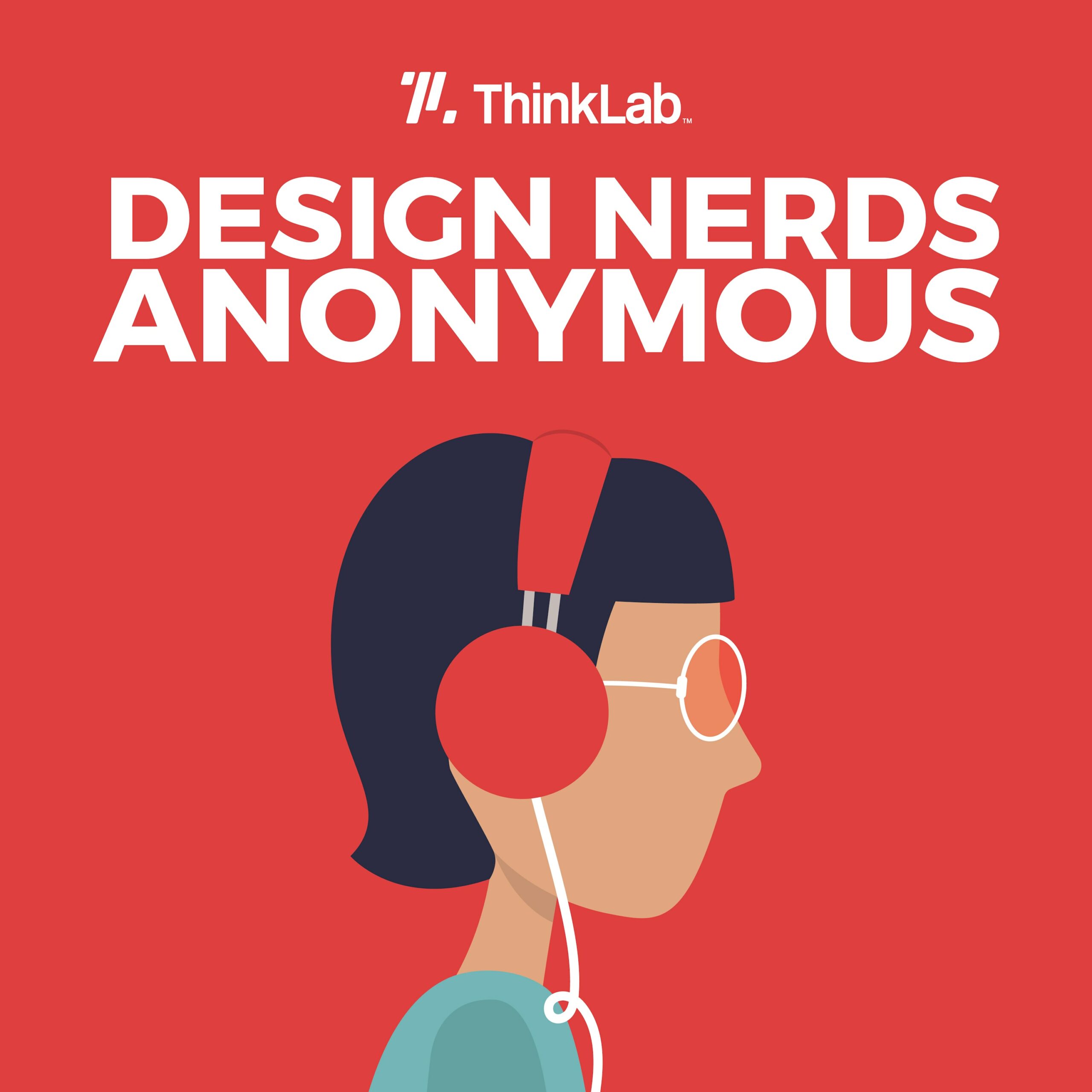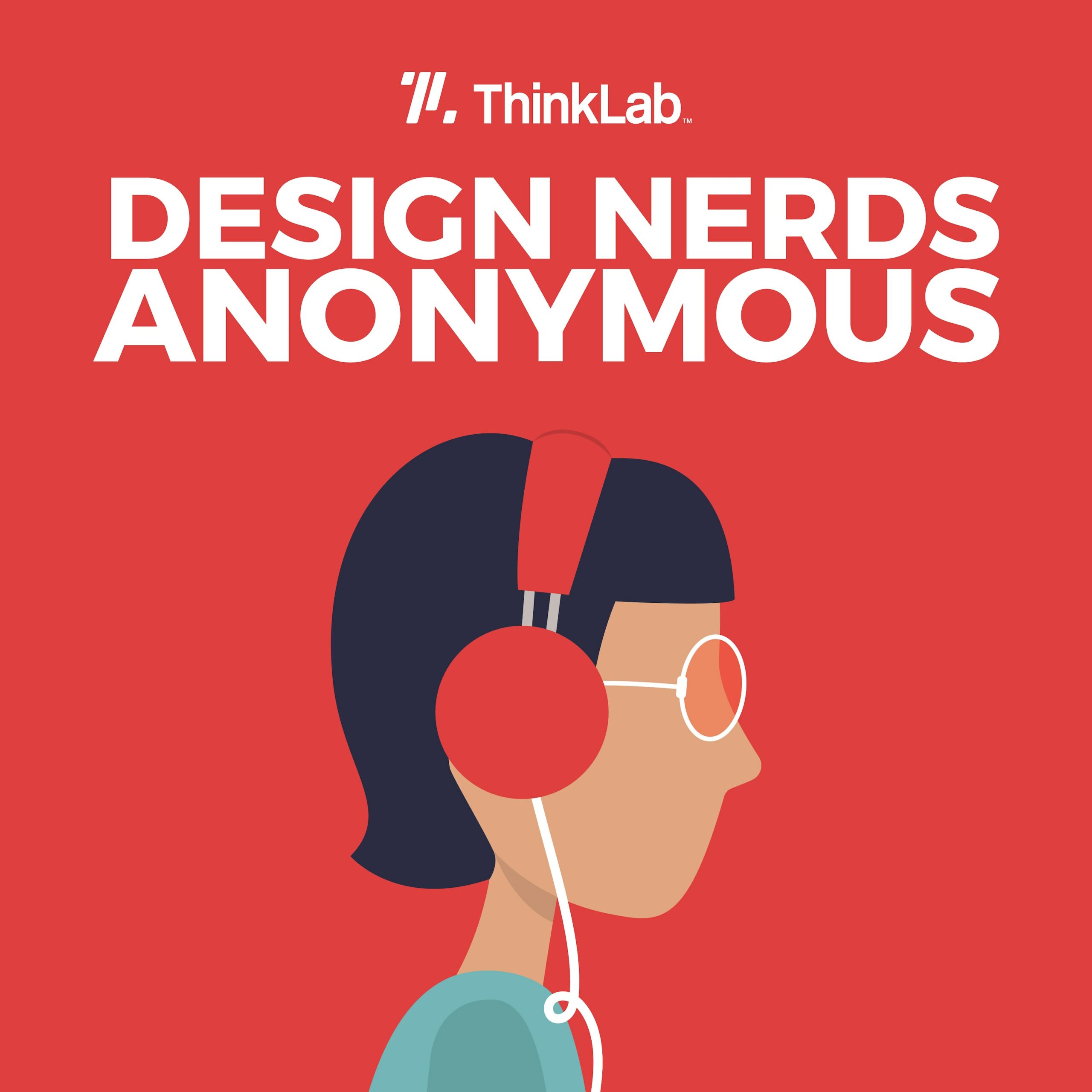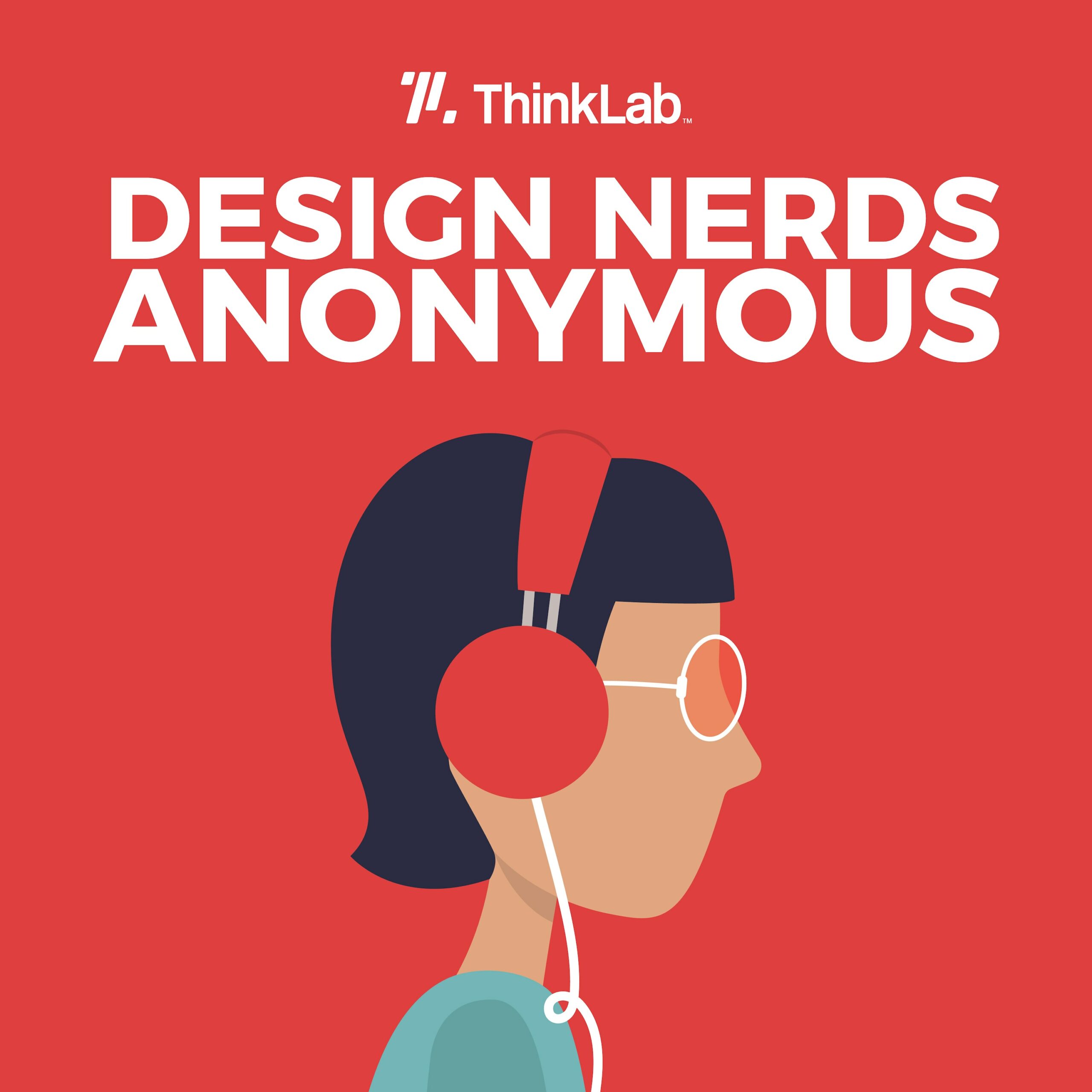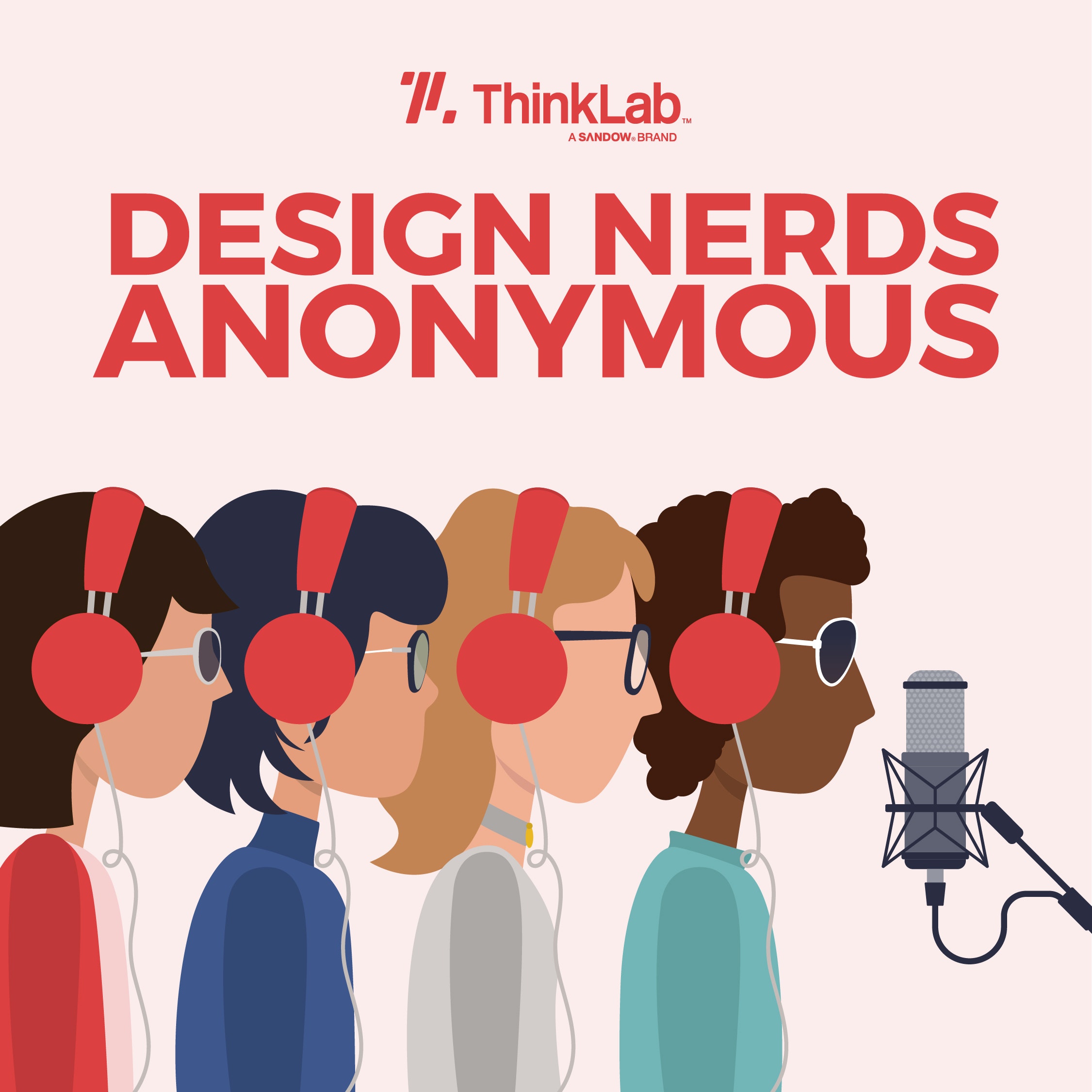In this episode of Design Nerds Anonymous, we explore how Gen Z’s unique approach to building relationships, trust, and connection in the digital age can transform the workplace. Our guests shed light on the dynamics of face-to-face interactions in a digitally native generation.
- Explore how to adapt your management styles to meet Gen Z employees where they are in terms of digital-native expectations.
- Learn why Gen Z’s unique upbringing in the digital age positions them as mentors for leaders of older generations, offering solutions that can drive business success.
- Discover how emerging technologies like Chat GPT and AI are poised to unlock untapped potential when paired with the next generation of talent.
Guests:
(Please excuse any grammatical errors in this transcript as it was auto-generated from an audio file.)
[00:00:00] Welcome to season five of design nerds, anonymous, the podcast that sparks curiosity at the intersection of business and design. I’m your host, Amanda Schneider.
Welcome to Season 5 of Design Nerds Anonymous, the podcast that sparks curiosity at the intersection of business and design. I’m your host, Amanda Schneider. Now every episode this season is packed with knowledge handpicked from six months of intense research during ThinkLab’s most recent design hackathon.
We’re exploring how the ripple up effect of Gen Z is set to drive change. On this episode. We’ll be exploring one of our most critical topics, how to build trust and connection in the digital age. As we dive into Gen Z’s unique approach to building relationships in chapter one, we’re joined by one of our most provocative and insightful guests [00:01:00] this season, Hannah Grady Williams.
She’s a renowned author, TEDx speaker, and Gen Z CEO advisor. She’ll help us unpack the surprising dynamics of face to face interactions in a digitally native generation. Then, in Chapter 2, we’ll begin to unpack her provocations with HKS.
A top interior design, giant of design, whether you’re a Gen Z er seeking authentic relationships or someone looking to bridge the generation gap, this captivating episode will equip you with the knowledge to navigate the evolving landscape of trust. But before we dive in, let’s give a big shout out to our incredible sponsors who made this episode possible.
All right, my fellow design nerds. Let’s meet our chapter one interviewee. Hannah Grady Williams.
Hannah: [00:02:00] So I’m a native digital I just turned 25 and, I am, an author podcaster, blah blah, blah. But the thing I’m most excited about right now is I’m running the very first community of Gen Z plus Chat GPT.
In other words, we’re creating a hub where Gen Zers, who are becoming rebels and saying, oh my gosh, the school system is telling us we can’t use and embrace AI tech. We’re now getting to do that on our own. And I’m watching these kids from, 14 to 30 years old, build businesses using GPT and just basically explore the bounds of what they’re capable of as native digitals, which has been so amazing.
I graduated college when I was 18 and was launched into corporate really early. So I feel like I have this really interesting perspective of understanding what are we looking for in the workplace and what do companies need to succeed and thrive, especially with their talent strategy.
And then I have the perspective [00:03:00] of being a representative of Gen Z and knowing what my peers are looking for at work and where the connections and the disconnects are. So that leads us to my TED talk, If you scroll through, to the comments on my TED Talk it’s very interesting to read what people have to say about.
Amanda: I have to do that
Hannah: Oh gosh. You’re in for, I don’t know if you’re in for a treat, maybe you’re in for a, a laugh. We’ll say. the comments are full of just a misunderstanding of the topic that I was representing, it’s a good indicator of how far we have to go to really understanding native digital.
So basically I came out very boldly and said that we are living in a world now with two distinct categories of human. We have the native digital and the native analog. And I believe this is the most, instrumental, distinction for business leaders and marketers to understand and specifically talent leaders.
There’s so much to unpack here, but [00:04:00] basically, so this idea that native digital humans who are roughly under age 30. And then you have native analog humans who are simply, people who have the real world as their first primary life experience, and their digital life is secondary, and they’re usually roughly over the age of 35.
And then you have digital immigrants who are in the middle depending on how they were raised, et cetera. So essentially this premise is saying, We have a new category of human, the native digital, which I’m a part of, where we literally have a primary life experience that’s digital and a secondary life experience that’s analog or the real world, meaning that unlike, my parents’ generation as an example, we simply see the world from the digital lens first.
And the analog lens second, the way I like to describe it is if someone is a native to, let’s [00:05:00] say, South Korea, if they’re a native, they’ve come from, family there. They’ve lived there for 20, 30, 40 years of their life. Then they’re a native South Korean, right? If you or I, Amanda, were to go to South Korea after living in America for 30 or 40 years and said, I’m going to become a South Korean I’m going to acclimate to their music, their culture, their traditions, and I’m going to be a South Korean. and I make the claim. I am a native South Korean. We would all laugh at you, right? Like you can’t be a native South Korean after living in America for 30 years. So in the same way, we have a generation now that is native to digital and there’s all sorts of extrapolations we could get into of how that plays out.
Amanda: One of the things that I love about the way that you describe all of this is your patience to explain, how things.
Look from your generation’s vantage point, because I think for many of us, we don’t know that we’re swimming in water. It’s just the air that we breathe. So one of the topics I want to dive into a little bit more is this idea of FaceTime.
your [00:06:00] generation is, Native digital and I say that they’re more digitally, physically, fluid than anything I’ve ever experienced. in this research that we’ve done that this season of the podcast is built upon, we ask a lot of questions like, when you’re together, what are you using?
And they’ll talk about digital tools or, when you’re online, what are you using? And they’ll talk about ways they’re connecting with other humans. It’s really just the air they’re breathing.
Generation Z really does crave more FaceTime, and I worry about this because I think when my fellow native analogs hear this, they think yes, we’re going back to normal. I don’t think it’s going to be the normal that we once knew. And so what I like about your.
Provocativeness is that I want it to push people out of their comfort zone that, don’t be so scared the pendulum is swinging. We saw it in a lot of our data as part of the hackathon as well. But we also have to make sure that we’re still rethinking even that FaceTime and what it means.
So will you talk a little bit about your perspective
Hannah: This is such a good question and I love the phrase that you used of, it’s just the air that we breathe. [00:07:00] Because digital is just the air that we breathe. We see it as a norm. So first I’ll, I want to dissect your question here a little bit because I think this is a really crucial understanding. what often happens is from the native analog point of view, what I see is when you hear a statistic like 62% of Gen Z actually prefers face-to-face communication or feedback over digital feedback, to your point, they go, oh, great. We finally got a generation that we’re pulling back to normal.
But the difference is, Face-to-face communication is not a new normal. It’s simply the response to the fact that digital communication is a commodity. So the way I’ll describe this is, you tell me if this is true about your childhood, but this is what my parents tell me. I’m in the south, grew up in the south, and my parents grew up in the same area.
And when my parents were younger, it was very common for them to, after a day of school they’d be. [00:08:00] hopping off the school bus, they’d walk down to the neighbor’s house to, have a cookie and a glass of milk. that was their normal sort of everyday routine, pop down to the neighbors or play outside. So if you’re in that frame of mind of remembering back to when you were a kid, Imagine that trip to your, neighbor’s house or a friend’s house in person after school, imagine that the equivalent of that experience for a native digital is hopping into a discord channel.
Or hopping onto social media. So there’s this sense that as, normal as that experience was for my parents’ generation or my grandparents’ generation to pop down the street for a conversation in a cookie it’s the same for generation Z when we go online or into a gaming world to interact with our friends.
So what do you have happen here if the normal for those two generations is those two different things, what do we crave as humans? We crave the opposite from what is the normal experience when it comes [00:09:00] to things that are special. So maybe for my parents it was crazy when the, new Tech came out of an iPhone and they had this like special experience with tech.
For us, the technology’s always been there. That’s our digital first norm. So to us, the special thing is a face-to-face conversation with a mentor or a friend or someone who we trust. And so that difference leads to Gen Z craving more of this face-to-face time. And when I say face-to-face, it could be what you and I are doing right now, Amanda, just having a digital face-to-face conversation.
It doesn’t have to be in person, but having this face-to-face engagement is something we crave because the rest of our life is digital. In many ways. So just taking that one illustration because when you take it that into the workplace, the way I would think about it is you need to have as a company, a foundation of your communication of the way you [00:10:00] practice and do business in the digital world.
But then you need to train your managers and your leaders to understand this key concept of how much Gen Z craves face-to-face communication, so that when there’s a, a time to give feedback to your Gen Z employee, or when you want to do something special for them to acknowledge how great they’re doing, or even to have a constructive, conversation, you should be doing that face-to-face.
And that’s how you’ll build a better relationship with your Gen Zer. It’s not that we’re going back to normal by Gen Z, wanting face-to-face, gen Z’s still going to expect that they can do their work fluidly in the digital world.
The face-to-face is the exception, the special moment, the time that we crave it should not be the way of doing business or your Gen Z is going to get really frustrated.
Amanda: you mentioned manager training and I want to cue in on that for just a minute because most of the managers are probably [00:11:00] not Gen Zers yet. There may be a few exceptions out there, but there was a beautiful moment in our research where one of our Gen Zers said, they keep talking about how hard hybrid is. This is not a problem for us. Like this is literally what we do. The issue is a change management issue for older generations. And I thought that was such a profound moment. And going back to just the air that we breathe. I think oftentimes one of the things that we’re doing is we try to translate as we try to immigrate from that native analog to native digital world, is that we try to take the things that we know and directly translate them.
One of our favorite sayings is, just because you throw a fish in the air does not make it a bird. because that bird not only does not have wings, it’s going to fall. But even if it did have wings, it couldn’t breathe in the air because it just wasn’t meant for that. And I feel like this is often how I see analog natives trying to make the digital realm work, is they’re taking what they would do in the physical realm and translating it directly online rather than reimagine.
So we’re talking about relationship building. [00:12:00] let’s talk about recruiting, retaining, connecting. if you had to give three pieces of advice about how to start that translation without being quite so literal, what would you say, where do you start to try and translate this to create this new world that is maybe inspired by. Digital natives or inspired by Gen Z, but benefits all of us for so many reasons.
Hannah: First of all, when it comes to building these bridges between generations building relationships, it’s important for us to remember that all generations crave being treated as humans.
Amanda: can I jump in there real quick? Because I think one of the interesting things is, it’s the golden rule. Treat everyone like you would like to be treated. And I think when you have these divides that you’re talking about between the mindset of an analog native versus a digital native, sometimes it can be a barrier because when they’re treating others, like they quote unquote want to be treated, meaning the best, it actually is hurting them.
Hannah: I am so glad you [00:13:00] brought this up, Amanda. I go on hundreds of podcasts and that’s the first time someone’s ever drawn this distinction because to your point, it was I think a very common in other generations to use the golden rule as the standard for everything.
And If a native analog treats Gen Z the way they would want to be treated, it’s creating literal barriers.
I cannot imagine being you, being a parent, being my parents, I’m one of seven kids, and this has got to be the most difficult generation to parent. if you think about it, when I have kids, I’m going to get to parent another set of native digitals and I understand their world.
So I cannot imagine right now native analog parents parenting native digitals, so much applause to you guys who are doing that. so to this point, all generations want to be treated as humans. However, that looks very different now that you have native digitals.
What being treated as a human means to me is very different from what it meant to my parents. [00:14:00] and I’ll also say that as a Gen Zer. Every generation that I speak with wants certain things out of work. However, gen Z is the first generation with the infrastructure to act on it.
Millennials, for example, set the pathway for improving work culture around, the old adage of looking at work-life balance, They set the stage for that saying, family is important. the people I work with, that’s not where I get all of my community from.
But Gen Z’s coming in and we now have all the outlets. The infrastructure, It’s easier than ever to start your own company. It’s easier than ever to make money through freelancing, gig work, cetera. So it does not make sense anymore for my generation to settle for anything less than amazing.
And that’s why I think. A lot of companies and cultures have such difficulty with Gen Z is from the native analog point of view. They’re thinking, how come this kid walks in here [00:15:00] and thinks they deserve this whole list of benefits or all these privileges, and they literally just got out of school.
But then that Gen Z kid turns around and says, if you’re not going to abide by, my expectations, I’m just going to go out and gig work and freelance.
Amanda: and then we’re like, oh, this generation is not loyal.
Hannah: Exactly, and that’s why as hard as it is to say this and rather to hear it, this is the reason I believe firmly.
It’s up to the companies to change drastically, more drastically than ever before for any other generation, Rather than for the Gen Zers to change and to become quote unquote more loyal. Because for the first time that I can think of in history, this generation has the power to say no, not just the words coming out of our mouth.
We can say, millennials had the power to say, I want more time at home. I want these benefits. I want to higher salary, but at the end of the day, They had to stick it out or at least move to another company who had more of those benefits [00:16:00] because they didn’t really have an option.
And now with Gen Z, we have options. There are so many options, and of course that applies to any other generation who can take advantage of those options, like gig, working and freelancing. However, gen Z is the first ones, able to do that. When we don’t have families to commit to, we don’t have the same strings attached.
Okay. So to go back to our three tips of building loyalty and how to build, connection in recruiting and retention. So the very first thing I would say is when it comes to Recruiting, you want to reach Gen Z and build trust with us, you need to understand this fundamental concept called the Narcist story. gen Z is a very narcissistic, individualistic generation, and there’s pros and cons of that.
I’ll be the first to say, I see a lot of cons from having a very individualistic society, and I see that with my peers. It comes [00:17:00] out in dating, it comes out in, community, The side that companies need to understand is when you’re trying to recruit Gen Z, you have to speak to our Narcissist story, meaning you have to speak to the brand we’re putting out in the world versus the other way around.
A very simple example is in recruiting materials. Instead of saying, we’ve been around a long time, we’ve been around 50 years, we’ve got all this great innovative technology because of that, we’re family owned, All the things companies typically say, Turn that around and say, Hey, you Gen Zer, if you are interested in X, Y, Z things, if you get inspired by this type of work, then this could be an interesting role for you.
And then turn it back around to you and say, this is how we provide that for you. So these very fundamental, simple shifts in messaging Can really help connect a Gen Zer to what you’re up to without sounding like you’re [00:18:00] trying to rope them into your
Amanda: Mm-hmm.
I’ve told you this story, but for our listeners, we just posted an open role and I took our old job description, which had things like job responsibilities. And about think lab and I switched it and I did everything that your book said to do.
And it was things like, let me describe the culture of our company. If you’re someone who wants to have a to-do list handed to you, this may not be a great fit. But if you’re someone who wants to create the to-do list, This might be a great fit. And instead of job responsibilities, we said what you’ll bring, and just tiny little tweaks like that.
We posted it at 10:00 AM on a Monday and we had to shut the posting down within 24 hours because we had over 280 responses. And this was not some secret website that you told me about this was posted on LinkedIn, like we posted every other job. as part of that, we also encourage them to submit a TikTok resume.
But I will say between the response that we got there and the TikTok resumes that we got, [00:19:00] within two weeks, were down to our final candidate.
Hannah: Oh, that makes me so happy that it’s and what was the, like when you had put out a typical posting in the past for a job? what types of responses
Amanda: So I would usually, leave it open for a week, sometimes two. So that took, two weeks out of it right there. And then, we would start maybe with the top. a dozen or a little bit less, depending on how great the candidate pool is, we would set up 15 minute interviews. Now we took those 15 minute interviews down to one minute. In that video, we can see immediately are they tech savvy? Will they be able to tell their own story?
Because if they can’t tell their own story, they probably can’t tell my brand story. we’ve taken what would normally be probably a two month process minimum down to about two weeks.
Hannah: Oh my gosh. That’s so cool. It is fascinating to watch companies just take these very small things. It doesn’t have to be this giant leap, and you can build so much trust with how you come across digitally.
So to your point, when you simply take messaging and tweak [00:20:00] it to make sense for a Gen Zer and where we’re at, you can take, your hopeful same outcome and get it, get to it in less. Time with higher quality candidates, all of that just by taking some very simple action steps and meeting us where we are.
So to come back to this sort of tips and building trust, the second tip is, Meet us where we are in the digital world. Don’t assume that you can take what you want as a native analog, and expect that the same messaging, the same styles, the same tone, is going to work with a gen Zer whose attention span is shorter, just naturally. Our brain is literally just wired differently from how we have grown up. so meet us where we are with your messaging and with, we’ll get to my third tip.
Meet us where we are in terms of how you manage us. Gen Z expects very different things out of our career pathways.
Every company needs to be looking at their career pathways.[00:21:00]
When they’re thinking about the translation from native analog to native digital. in the book, there’s some very clear examples of what I call the jungle gym model versus the video game model and some different models for career pathing that would be helpful for any leader to look at.
Amanda: what excites you about the future as you think about this exact moment of time that we’re in?
Hannah: So much Amanda. There is a massive opportunity for any leader who is natively analog, who is getting the opportunity to manage a native digital, to really become a mentor instead of just a boss. It’s an exciting time. To tap into the untapped, to tap into the minds of a generation who literally has grown up on a different planet, in a sense, who understands worlds of gaming, worlds of online communities, worlds of e currencies, all of these things.
[00:22:00] Just because they’re natural to us and there’s so much potential to be untapped when that person is paired with new technologies like Chat GPT or AI. So to any leader who’s listening, I would say if you’ve hired a high potential Gen Zer and you see a lot of promise in them, a good question to ask is just go to them and say, Hey if you were in my role, what would you do? what would you do differently? And just see what crazy off the wall things they come up with, because you might be absolutely blown away.
Amanda: And there’s so much more, tangible advice in your book. if people want to get a copy of your book, they want to follow your podcast, they want to check out your new Chat GPT, the skills program, tell us where they can find more.
how do they get in touch with you?
Hannah: just go on my website. It’s very simple. it’s just hannahgwilliams.com. And then if you want to look. Look at the skills or, oh my gosh, better yet, if you’ve got kids between 14 and 28 ish and they’re just exploring GPT they can go to d’skillz.io.
Amanda: Wow, that chat with Hannah was something. I was looking forward to this conversation ever since I came across her book and TED Talk, and I certainly hope we’ve inspired you to dive deeper with her. And by now, you know, we are just getting started. In Chapter 2, we’ll dive in with HKS, a top interior design giant of design, to help us move these ideas from theory to reality.
Into practice and what gets me truly excited is your exponential potential. Yes. You listening in with those earbuds in right now to put these ideas into action. Our industry has so much influence. So how will you use yours? As you listen, think about your own company, your clients. Who else do you know who could [00:24:00] benefit from these insights?
Then I’ll invite you to share this episode with them. Okay, here we go. Let’s meet Jeff and Gaby from HKS.
Jeff: My name’s Jeff Kabat. I’ve been with HKS for 17 years, and I’m currently the global, practice director for health interiors. I love being able to influence health outcomes through the work that we do
I’ve got three children of my own and we are big users of the healthcare system.
all three of my boys have had multiple trips to the emergency department. And so,I love getting to see both sides of, the spaces we design.
Gaby: my name’s Gaby Silverman, also working at HKS as an interior designer. I’ve been here for about a little over a year, but I’m about six years into my career. so the young millennial, age and, healthcare was definitely my, Passion to go into for design. I grew up with a disabled sister, so that really brought in, how I [00:25:00] wanted to go into designing spaces for health and families and patients.
Amanda: Jeff, give us one of your biggest takeaways from listening especially presumably you are also raising digital natives as an analog native.
Jeff: That was my big takeaway.
I’ve got a 10 year old, six year old and four year old. And, as parents often do,we’re faced with, transferring our own upbringing, onto how we parent our young kids, and that was really the big takeaway from hearing the native digital versus the native analog for me was that, I’m raising three native digital children and no longer can we look at our kids in the eyes and tell them that, screen time will have an adverse impact on their ability to, contribute to society or be successful in what they do.
so it’s certainly challenged my paradigms around, how we interact with technology, from a parenting standpoint.
Amanda: Gaby , one thing you took away from the interview with Hannah?
Gaby: I definitely took away, not only from the podcast, I watched the TED Talk and I [00:26:00] shared it with a few of our Gen Zers in the office as well to get their takeaway and. One of the biggest things was challenging the idea of the corporate ladder how that relates to our industry as well, which is very, what’s the next step, what’s the next goal you have in your career, and how they’re coming in and they’re challenging that in a way.
Amanda: I think it’s so interesting that both of you’re coming at this from a health aspect and as we expand that health definition to mental health,
Jeff: what advice do you think firms, our industry, maybe even our clients could implement based on some of these ideas that were presented, in this research great question, Gaby and I were chatting the other day,
And she was asking what the training is like for leadership at HKS, around these topics. and where I settled with that.
To answer your question, Amanda, I think the key is communication and empathy being a two-way street. whether it’s personality types or these generational [00:27:00] differences, whether we’re native analog, native digital, or somewhere in between. I think it’s crucial for leaders to invest in understanding that our workforce makeup is comprised of all of these vastly different groups and as leaders, I think if we’re striving to build a culture where all these generations can have, thriving and fulfilling careers, and, at the same time where all the generations can contribute maximum value to the firms that they’re in, I think that’s the key.
Amanda: I think in one of the podcasts or the TED Talk, it was talking about bringing a Gen Z or, a younger voice to the leadership table, just to get their opinion and see how they’re viewing our industry coming in. And where it can go. so I really appreciate hearing that from you, Jeff, about the two-way street.
Gaby: And it’s not just Gen Z coming in and, they have such a strong voice, which I love. I’m so in love with their generation right now, how they’re coming in and they are focusing on mental health [00:28:00] so much too. But it’s also looking at leadership and everyone in between and how we can help each other grow for our firm.
But then to also add on to the mental health comment, it’s something I’ve been talking about a lot with our younger generation. The ones coming right outta school and out of the pandemic, and never working in an office before. And I love how they’re prioritizing work-life balance.
They don’t want to work to live. they are trying so hard to prioritize where they can grow in their careers, but also, have such a fun life outside of it. And I think starting all these jobs virtually really taught them that. And, I’m also coming from, we just moved into our new office in our New York office a few weeks ago, so I’m seeing a lot of our younger generation come in and how they’re, seeing how we work altogether in person. but they definitely prioritize mental health.
Sometimes I feel like in our industry, we can forget that, and we get so pulled into our [00:29:00] work that we forget that balance. So I really admire them coming in with that mindset.
Amanda: I love how much you’ve used the term love for Gen Z because I think some have, had maybe a little bit different reaction to their boldness, and I think that’s one thing that really struck me about even. Hannah and her general presence and some of her messages. you know, it can be quite polarizing.
And, I’ll throw out the love word again, that I love how Jeff brought in, like bringing Gen Z to the table because I feel like often times new generations are looked at as. how do we, teach them and they just don’t know enough yet, and maybe they shouldn’t have a voice at the table because they need to learn.
And I think more than any other generation, Gen Z is really demanding this two-way street. But there are different communication styles and there are different nuances to some of this.
Jeff: There’s so much potential, and energy, with Gen Z, they’re creative force and [00:30:00] I think if they’re not brought to the table in a healthy, equally respectful two-way type communication with leadership.
A lot of these firms are going to be left in the past, with the way that they’re approaching design a way that they’re thinking about and embracing technology and solutions. so I think there is so much work to do in our industry for firms to recognize this, build a culture where it can be, celebrated, and people can thrive.
And really find where that goes. I don’t know that we’ve gotten there yet where we’ve untapped that potential yet with Gen Z.
Amanda: I want to dive into a couple of different things that were brought up. One is this idea of the voice at the table. in another episode we’re going to be talking about new approaches to mentorship, and one of those being something that is called a shadow board that has been used very successfully for companies like Gucci that found they were aging with their demographic and not able to really capture
Next gen demographics. So they implemented a shadow board, both in product development and [00:31:00] in a lot of their, marketing approaches, which was a group of Gen Z’ers So it was a shadow board to their executive team that helped teach them
How Gen Z’ers think and how they should evolve their brand on that front. And then Hannah brought up a lot of these alternate career approaches.
What are some of those things that you think firms could try in our industry to keep our young talent?
Jeff: I do think that’s where we’re headed. I know when I started, my career, it was, I want to design cool spaces that improve people’s lives. and, It. I think that the opportunity to explore within the architecture and design industry within the confines of being an employee are vast.
There’s so many more opportunities now. So h k s employs researchers. we have, Clinicians, on our staff, we have, people who dive into software development, and exploring and pushing software to create,very complex, designs.
But, I think that there’s so many more career avenues within the [00:32:00] architecture and design industry today than there were, 17 years ago.
Now there’s so many more avenues to explore, how we loop that in to our value stream that we offer our clients. And I think that as we start to untap Gen Z’s potential and what our clients are asking for, I see that only continuing to get broader and broader.
Gaby: I want to push us a little further on this digital native versus analog native concepts because, actually I’ll tell you about an exchange. We posted, a carousel on social and one of the things in the carousel was a firm leader saying, I’m really struggling because we need to be back in person for these pinup meetings.
Amanda: I have yet to find a digital way that we can do these in-person brainstorming session, these pinup meetings, that is as effective and basically was pushing, we have to be in person for these. And I got a direct message on Instagram from someone who was probably a digital native.
[00:33:00] who really pushed back and said this kind of thing really makes me mad. That basically we’ve made so much progress in exploring how we can do a lot of these different meetings, because they can be done.
And now this back to office movement is almost giving us an excuse to stop rethinking that if we’re trying to. Recreate what we knew in the physical world.
Gaby: Exactly. Directly translate it into the digital world. It doesn’t work. But if we rethink it, it could actually be better. challenge our listeners, challenge us. What are some of the things that we should be considering that.
Digital native point of view that could enhance how we do things in this industry.
Jeff: So I’ll offer a perspective, and I don’t know if I’m going to fall into the, first person on your carousel or second person on your carousel example.
Amanda: You can empathize with both of them. It’s okay.
Jeff: Yeah. and that’s pretty much where I’m headed. What I would say are probably mostly, gen X, potentially some of the baby boomer leaders that are in our firm.
Around the topic [00:34:00] of being back in person, around the table, doing a design crit. I think a lot of what they’re challenged with is they have these foundational memories in their career of being elbow to elbow, late night with trash, paper colors, working on things. And there’s really something to be said about the team chemistry that creates, the amount of trust that your employees are there in it with you.
And at the time, that was a way to communicate indirectly that I’m passionate. I’m here for this project. I’m as dedicated to it as you are. So I think that’s the point of view that they look at. And now that they see that’s missing or being challenged, it’s unsettling. and then on the flip side of things, We should continue to push for new and improved ways to do things, with the emergence of technology, what we’ve learned through the pandemic.
And so again, I’m going to go back to the idea that there should be an open-mindedness and an empathy as a two-way street.
Having some sort [00:35:00] of open-mindedness to extract what it is that older generation is missing. but then we shouldn’t stop there. We should push to say, are there new and better ways to do this because. If the older generation is also open-minded, then we can push it to a new and better place where, everybody wins.
Maybe that’s just the optimist in me.
Amanda: I love the optimism. I think one of the challenges, the time that it takes, to do this in an Amazon era where our clients expect more, more, more, better, better, better. Faster, faster, faster. So I think a piece of that challenge is time.
Gaby: Yeah, I definitely agree and feel there needs to be some kind of balance. I hear both sides and it’s hard, and something I’ve heard a lot was actually that. A lot of the people who started during the pandemic really actually craved the socialization aspect and the coming together aspect for design and mentorship and learning. And at the same time, I’ve actually heard a lot of the [00:36:00] older generations say that they like more working from home and that, they get more done, more heads down and a little bit of everything. But I think there is a way to. have this hybrid of both.
Honestly, even some of my best memories were those late nights with, one of my favorite mentors and. It is different with Gen Z coming in I think it also challenges us too.
Like how can we be more efficient?
Amanda: You both participated in the hackathon. as we think about communication, what haven’t we talked about here that you think is really important to prompt our listeners to help apply some of these concepts to their business?
Jeff: one thing that really stood out from the podcast was Hannah speaking about the idea of altering the language that’s out there in job descriptions. And Amanda, I think you had said you, you kicked the wheels on that with your own company, and the response rate was tremendous.
Amanda: was unbelievable. [00:37:00] Yeah. I’ll send you my before and after so you can read it. the change in just verbiage was unreal.
Jeff: I thought that was enlightening. one of the things we’re tasked with and challenged with in our industry and probably others, as well as, attraction of top talent, and retention of top talent. and not being, Invested in understanding Generation Z and what makes them tick, what gets them excited, what keeps them excited, what fulfills them is just a huge oversight.
And so I thought that was really interesting about how the language in job descriptions, job postings, shifts to an understanding of what makes Gen Z tick and how that had a direct impact on your response rates. I think we could all. Take a hard look at, what we post for our job positions and improve that way, and then use that as part of our, ongoing language with mentorship and reviews and just different things throughout the year to, to stay engaged in that same way.
Gaby: [00:38:00] And it’s how, and not just Gen Z, a lot of people, how they’re looking at job descriptions now. I even remember, when you’re right out of school, it can be a little intimidating.
This idea of, where do you see yourself in five, 10 years? I remember that was something we chatted about a lot in the hackathon was that idea is changing too, that a lot of the younger generation is looking okay, where do I see myself in one year?
Or, even, where do I see myself next week? I don’t know. But it’s understanding that and how do we take that into Where do you see yourself next? And sometimes I think it’s okay, are you good where you are now?
And then how do we help you grow from there?
Amanda: And I think that is probably one of my favorite, ahas that came from this hackathon, was really that more immediacy and how we can take that into effect. And then to tie that back to what Jeff said, I also feel like really looking at some of these things that are maybe being driven by Gen Z, just like when we look at a space designed for someone who’s maybe differently abled than the average person, [00:39:00] benefits all, If we look at things for Gen Z, what benefits Gen Z will benefit everyone.
Design Nerds Anonymous is a proud member of the Surround Podcast Network. Discover more shows from Surround at surroundpodcasts.com. Thank you so much for listening.
I want to personally invite you to connect with me on LinkedIn. You can find me at Amanda Schneider, and I’d love to hear what your favorite part of this episode was. Or, if you’d rather connect with the ThinkLab team, come say hi on Instagram at thinklab.design.We’d love to know what this episode sparked for you. This episode of Design Nerds Anonymous was produced and edited by Sandow Design Group. Special thanks to the podcast production team, Hannah Viti, Wise Grazette and Rachel Senatore.

